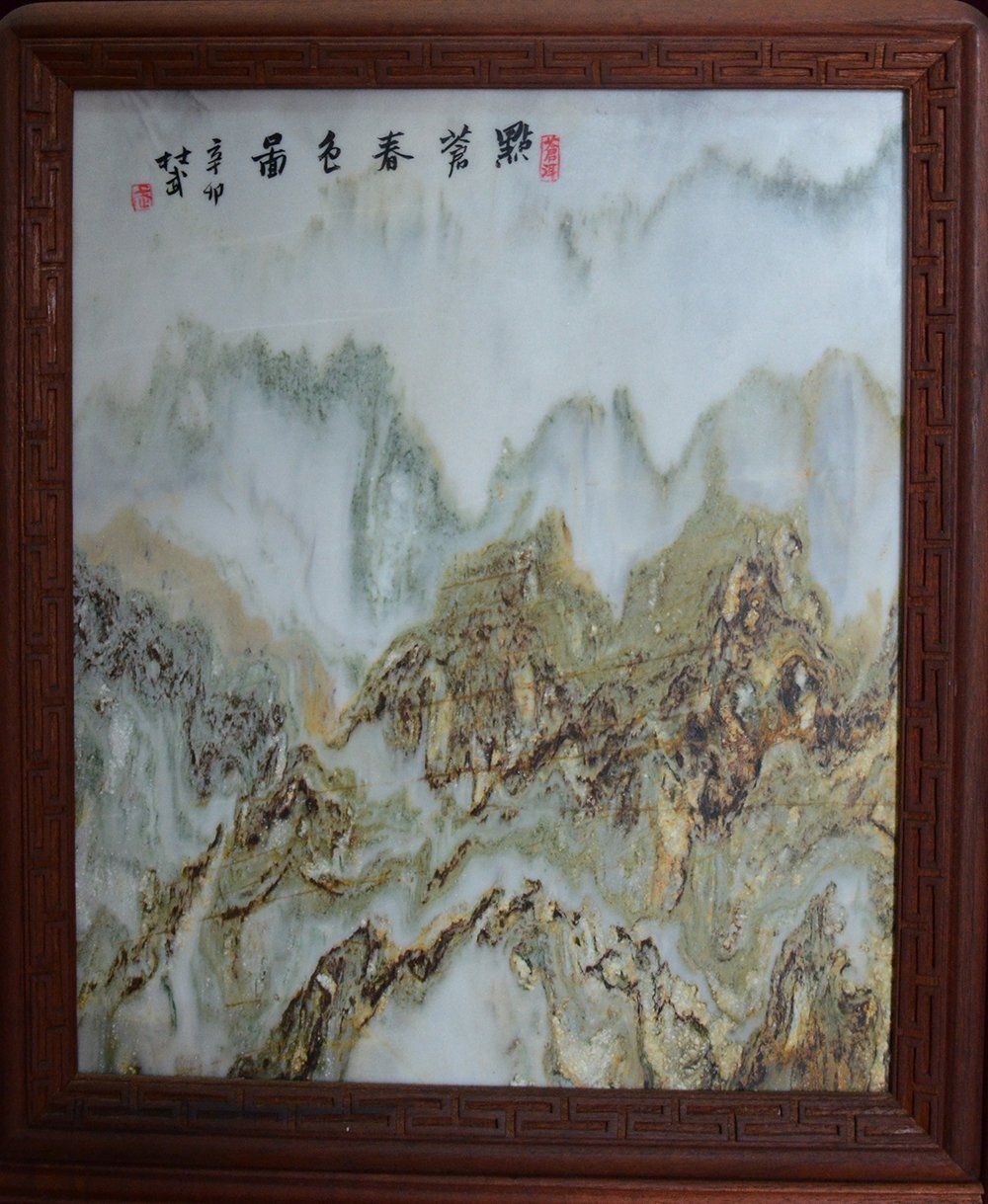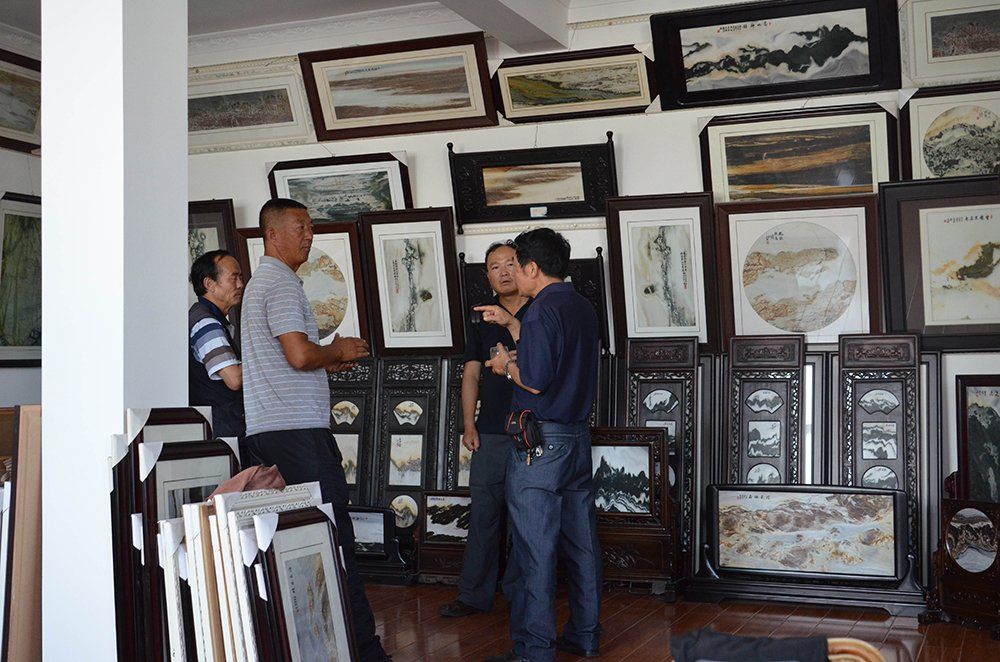Dali Marble from Yunnan China, Part 1Famous Sliced Marble Panels from Yunnan Province
By Thomas S. Elias, August, 2014
Dali picture stones have been incorporated into furniture since the Ming dynasty. Small thin pieces of round, square, rectangular, or fan-shaped marble are used in the backs of chairs, top of stands, and in large screens. In modern China, more pieces of Dali marble are mounted in often elaborate table top stands or framed as used as wall hangings. Some of these wall hangings have reached Western markets in North America, Europe, and elsewhere. Each piece is unique and the wide range of patterns creates an unlimited opportunity to appreciate the beauty found in the stone. In North America, they are sometime given the name “Dream Stones” by firms selling these stones.
Zhou Hongxing’s Chinese language book, The Album of Natural Marble Pictures Collected by Zhou Hongxing(2000), is an excellent introduction to these stones. He present hundreds of Dali marble pieces grouped into major categories and then subdivided within each of his major groups. His three major categories are: 1) Scenery of Mountains and Waters; 2) The World of People; and 3) The World of Animals. See the review of this book in the Reference section of this website. A shorter English language work, Dreaming of Dreamstones, China’s Extraordinary Natural Stone Paintings (2011), by Douglas Schneible is a good introduction to these stones. See Reference Section of this site for a review.



